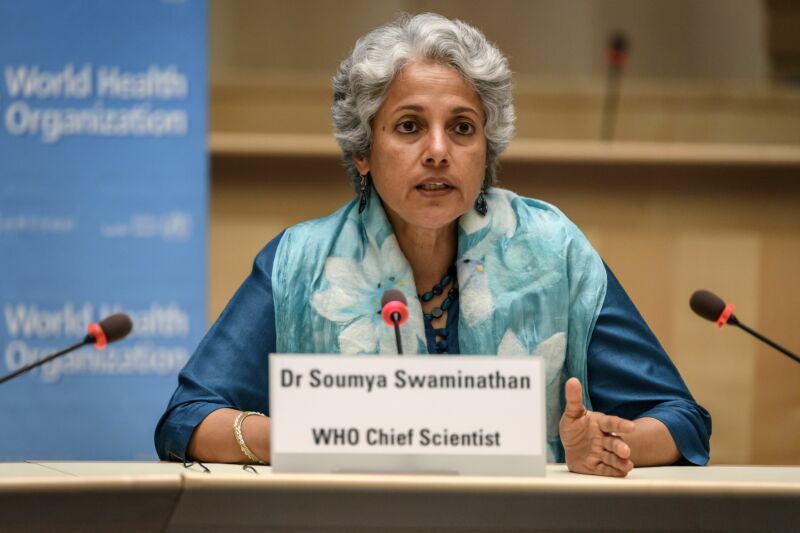
If you happened to read The New York Times this week, you may be under the false impression that the World Health Organization significantly changed its stance on whether the pandemic coronavirus, SARS-CoV-2, spreads by lingering in the air.
Around midday Thursday, the paper declared: “W.H.O., in Reversal, Affirms Virus May Be Airborne Indoors.” The paper also called it an “admission” and, in a subsequent article, said the WHO had “conceded.” The articles both noted that a group of more than 200 researchers had also published a commentary piece this week urging the WHO and other public health bodies to acknowledge and address the potential for airborne transmission of SARS-CoV-2.
The problem: the WHO did not change its stance on airborne transmission. And, as such, it did not issue any new recommendations or guidance on how people can stay safe.
What the organization did do is release an update of its review of the data on transmission, which it said it had been working on for weeks—well before the published commentary.
New data
In its updated scientific brief on transmission, the WHO said, basically, the same thing it has said for months on airborne transmission. That is: the question of whether SARS-CoV-2 lingers in the air is a topic of active discussion and, while it may be possible in some settings, the data in aerosol transmission so far is inconclusive or unconvincing. But, as always, the WHO welcomes more high-quality research on this topic.
In the latest brief, the WHO reviewed recent physics studies looking at aerosol production, but it noted: “the proportion of exhaled droplet nuclei or of respiratory droplets that evaporate to generate aerosols, and the infectious dose of viable SARS-CoV-2 required to cause infection in another person are not known.” It reviewed experiments on droplets and aerosols from normal speech and coughing and concluded, “To date, transmission of SARS-CoV-2 by this type of aerosol route has not been demonstrated; much more research is needed.” Likewise, studies using nebulizers to suspend SARS-CoV-2 in the air “do not reflect normal human cough conditions,” the WHO concluded.
The WHO noted that clinical reports of exposed health workers “suggest that aerosol transmission did not occur in this context.” And, the organization added, air sampling in health care settings has been inconsistent in finding genetic traces of the virus.
Same tune
Perhaps there was some rush to declare victory in the great aerosol war because the WHO did discuss recent reports of possible airborne transmission in specific outbreaks.
The WHO noted in the updated brief:
[S]ome outbreak reports related to indoor crowded spaces have suggested the possibility of aerosol transmission, combined with droplet transmission, for example, during choir practice, in restaurants, or in fitness classes. In these events, short-range aerosol transmission, particularly in specific indoor locations, such as crowded and inadequately ventilated spaces over a prolonged period of time with infected persons cannot be ruled out.
It seemed some were happy that the WHO acknowledged the existence of these reports—though the main purpose of these periodically updated scientific briefs is to review new data. And perhaps some interpreted the “cannot be ruled out” piece as the WHO admitting it as a possibility. But, of course, the WHO went on: “However, the detailed investigations of these clusters suggest that droplet and [transmission from contaminated surfaces or objects] could also explain human-to-human transmission within these clusters.”
This is not exactly a warm embrace of the airborne transmission. It’s more like the brief, awkward sideways hug you’d give a friend who doesn’t shower enough.
But most importantly, it’s not substantively different from what the WHO has said before on this. The organization said something very similar in its June 5 guidance on masks. Likewise, in the previous version of the scientific brief on transmission, published March 29, the WHO acknowledged the possibility of airborne transmission, writing: “To date, some scientific publications provide initial evidence on whether the COVID-19 virus can be detected in the air.”
But, it cautioned, “[t]hese initial findings need to be interpreted carefully." Just as it did in the updated version of the brief, the WHO went on to note the weaknesses of the data, suggesting that it was not yet convinced. And, as always, it called for more research.
When Ars reached out to the WHO to ask if the new scientific brief represented a “reversal” on its stance, a spokesperson responded concisely: “WHO has not changed its guidance.”
Health - Latest - Google News
July 11, 2020 at 06:00AM
https://ift.tt/3fdTmSa
WHO still skeptical SARS-CoV-2 lingers in air—despite what the NYT says - Ars Technica
Health - Latest - Google News
https://ift.tt/2zrj9Ud
Bagikan Berita Ini














0 Response to "WHO still skeptical SARS-CoV-2 lingers in air—despite what the NYT says - Ars Technica"
Post a Comment